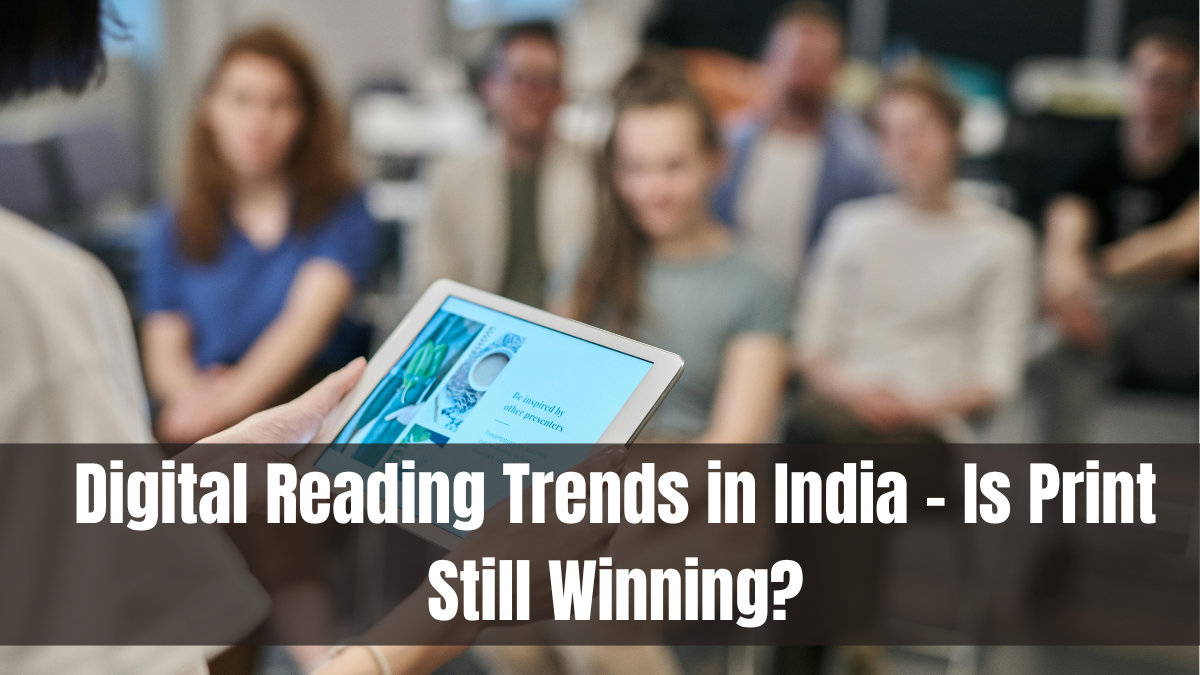In 2025, India finds itself at a fascinating crossroad between tradition and technology when it comes to reading habits. With smartphones and affordable data revolutionizing how people access content, digital reading trends are seeing a remarkable boom. Yet, print books have not vanished—they continue to hold a firm place in the hearts of readers who enjoy the smell of paper and the weight of a good novel.
This shift toward digital reading is reshaping how Indians consume books, newspapers, and study material—both in metro cities and in tier 2 and 3 towns. But is print truly losing ground, or are both mediums finding a way to coexist?

Rise of Digital Reading Platforms in India
Digital platforms are driving the new wave of digital reading trends in India. With affordable e-readers and free apps, people now have entire libraries in their pockets.
Some of the leading platforms include:
-
Amazon Kindle – Offers thousands of Indian and global titles, including self-published content.
-
Google Play Books – Integrated with Android devices, it provides flexible options for purchase and sample previews.
-
Storytel & Audible – Audiobooks are now hugely popular among commuters and multitaskers.
-
Kuku FM, Pocket FM, Pratilipi – These regional content platforms are attracting millions of listeners and readers across India.
These apps support multiple Indian languages, encouraging digital reading among diverse communities.
Key Demographics Driving the Digital Shift
Several groups are actively shaping the digital reading trends of 2025:
-
Students and exam aspirants: Many prefer digital books and PDFs for cost-effectiveness and portability.
-
Urban millennials and Gen Z: Audiobooks and short reads fit well into fast-paced lives.
-
Working professionals: Self-help, productivity, and business eBooks are popular for upskilling on the go.
-
Regional readers: The rise in vernacular content is bringing new readers into the digital fold.
These groups are engaging with books differently than previous generations, favoring convenience over nostalgia.
Print vs Digital – The Ongoing Debate
Despite the boom in digital formats, the print market is far from dead. A Nielsen India report shows:
| Format | Preference Rate (2025) |
|---|---|
| Print Books | 54% |
| eBooks | 26% |
| Audiobooks | 20% |
This reveals that while digital reading trends are growing, print still holds a narrow lead. People cite eye strain, screen fatigue, and emotional attachment to physical books as reasons for choosing print.
The Role of Educational Publishers
Major Indian education publishers like S. Chand, Oswaal, and Arihant are now offering hybrid models—print textbooks with access to digital content. This mixed approach caters to students who want to highlight and annotate physically but revise on a screen.
Government initiatives like DIKSHA and ePathshala are also encouraging digital reading in rural and government schools by offering free NCERT materials online in multiple languages.
Trends That Define Reading in 2025
The most prominent digital reading trends this year include:
-
Bite-sized reading: 5-minute reads, listicles, and summaries are becoming popular.
-
AI-curated reading suggestions: Apps suggest personalized content based on reading behavior.
-
Gamified reading: Points, badges, and levels are keeping young readers engaged.
-
Voice-integrated content: Books are now being read out by AI assistants for differently-abled or busy users.
-
Subscription services: Unlimited access to eBooks and magazines via monthly plans is replacing the need to buy each title.
All of this is making reading more accessible, affordable, and inclusive.
Challenges in the Digital Reading Space
While digital platforms are growing, they face challenges:
-
Digital fatigue: Many readers avoid screens after a full workday online.
-
Piracy and plagiarism: Free PDFs and scanned books are hurting authors and publishers.
-
Limited rural penetration: Despite increasing smartphone usage, rural areas still face issues with internet access and awareness.
-
Platform fragmentation: Too many platforms mean inconsistent user experience.
Despite these challenges, most publishers and authors are now adapting by offering multi-format releases.
FAQs
Is digital reading more popular than print in India now?
Not entirely. Digital reading is growing rapidly, but print books still hold a slight edge in popularity, especially among older readers.
What is the most popular digital reading app in India?
Amazon Kindle, Audible, and Pratilipi are among the top platforms depending on content type (ebooks, audiobooks, regional stories).
Are students shifting to digital books for exam prep?
Yes, many students prefer PDFs, ebooks, and online notes due to affordability, portability, and instant access.
Do digital reading platforms support Indian languages?
Yes, most major apps like Storytel, Pocket FM, and Pratilipi offer content in Hindi, Tamil, Bengali, Telugu, Marathi, and more.
Is digital reading environmentally better than print?
Digital reading reduces paper usage, but device manufacturing and power use still have environmental impacts. A balanced mix is ideal.
Click here to know more.
